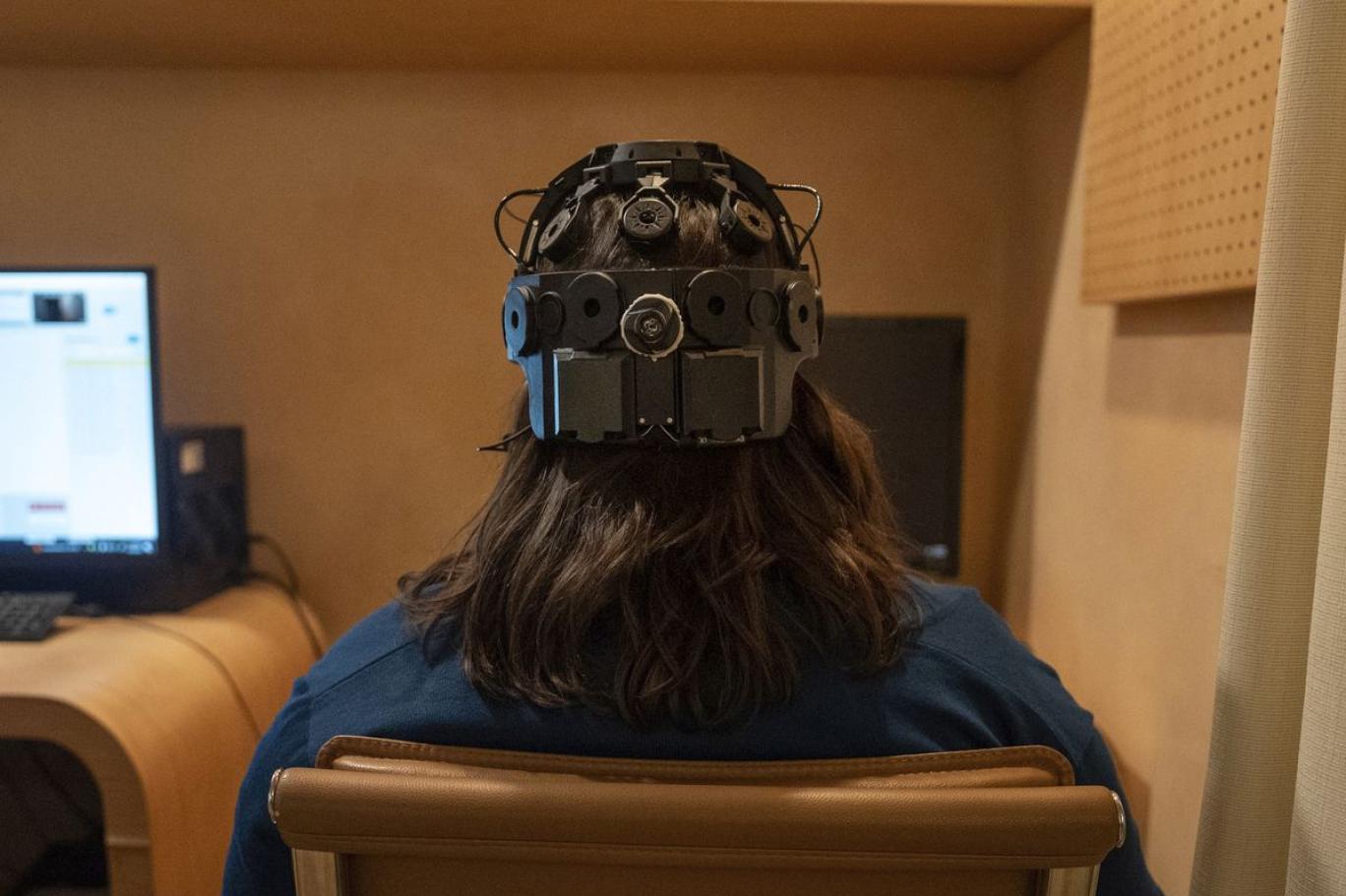Trauma-induced dissociation is a concept that raises many questions and some misunderstandings. First, we need to understand that it does not imply weakness or is not a pathological mechanism. It is an adaptive psychological response that helps individuals cope with a painful event.
The human mind uses dissociation to separate the individual from the negative experience and thus silence their emotional pain. However, this sophisticated survival resource comes at a psychological cost. In fact, it can fragment an individual’s memory and identity. It is a complex mental reality that we will explore in this article.
Trauma-induced dissociation
Trauma-induced dissociation is a neuropsychological defense mechanism that tries to separate the individual from external and internal experiences to reduce pain. It blurs their memories and distances them from certain thoughts and feelings. After all, if the memory of a dramatic event was permanently at the forefront of their minds, they would feel completely overwhelmed.
A study conducted by the University of Maryland (USA) suggests that the impact of this dimension has been neglected. They suggest that more awareness of dissociative processes is needed, as they are significantly associated with self-harm and suicidal behavior.
While it may be true that this reaction tries to protect the individual from suffering, in the long run a fragmented mind has enormous consequences on all levels.
Symptoms associated with weathering
Trauma-induced dissociation activates different neurological areas, regulating the trace of painful memory and the resulting suffering. The cerebral amygdala activates cortisol production and centers such as the prefrontal cortex stop functioning normally. The hippocampus, the center of emotional memory, also becomes dysregulated.
This means emotional numbness, memory loss and a reduced capacity for reflection and reasoning.
A paper by Leiden University (The Netherlands) highlights that this mechanism is an extremely complex process present in conditions such as post-traumatic stress disorder, dissociative identity disorder and borderline personality disorder (BPD). It is useful to know how symptoms progress:
- Anxiety
- Suicidal thoughts.
- Isolation of emotions.
- Identity doubts.
- Persistent feelings of anxiety.
- Sleep disturbances such as nightmares.
- Anhedonia or inability to feel pleasure.
- Self-destructive behaviors such as self-harm.
- Inability to remember certain periods.
- Detachment from themselves and the world around them.
- Going somewhere and not knowing how they got there.
- Having flashbacks (short memories of traumatic events).
- Feeling that many of the stimuli and experiences surrounding them are not real.
This kind of dissociation falls into a spectrum. As a result, some people experience only mild discomfort, while others suffer from a truly dysfunctional and painful quality of life.

Types of dissociation due to trauma
According to the Diagnostic and Statistical Manual of Mental Disorders (DSM-V), trauma-related dissociation can manifest itself in the following three ways:
- Dissociative amnesia. After one or several traumatic experiences, the person develops gaps in memory and forgets parts of the negative experience before or after.
- Depersonalization/derealization disorder. This causes the individual to feel that they are outside of their own body.
- They also believe that what is happening to them or around them is not real.
- Dissociative identity disorder. This used to be called multiple personality disorder. Sufferers take on different identities in response to trauma. An article published in The Journal of Mental Science claims that this is a serious form of post-traumatic stress. Moreover, its diagnosis and treatment is a complex reality.
Source of trauma-induced dissociation
Trauma-related dissociation usually occurs after several traumatic events have overlapped. It does not always occur after a specific event, such as the pain of the loss of a loved one. However, people who have been abused since childhood are at higher risk of developing this psychological defense mechanism.
The University of Turin (Italy) conducted a study claiming that multiple traumatic experiences put mental functioning at risk and dissociation occurs. Here are the types of events that can trigger these painful realities:
- Living in a war zone.
- Growing up in a dysfunctional family.
- Being mistreated or abused for several years.
- Living in a disadvantaged or negative social environment.
- Witnessing ongoing violence over time.
- Working in a threatening and highly stressful environment for many years.
Dissociation can give the individual the feeling that they are going crazy and that everything is out of control. The first step is to understand that this reaction to pain is a normal mechanism of their brain and that it can be treated.
Treatment of trauma-induced dissociation
When dealing with trauma-induced dissociation, the therapist always starts with the needs and specific reality of each patient. As stated in an article published in the Indian Journal of Psychiatry, an adequate diagnosis must be made, excluding other causes, possible comorbidities and predisposing traumatic and personality factors.
Let’s take a look at the strategies and useful therapeutic models used to address this reality.
Strategies and treatments
- Promote a healthy self-concept.
- Change harmful thought patterns.
- Develop healthy coping skills.
- Promote the capacity for physical and emotional self-regulation.
- Reduce the constant over-activation of the central nervous system.
- Encourage the individual to create new goals and meanings.
- Facilitate connection with the physical sensations of the body as a way of coping with emotional pain.
- Guide them to accept the emotional pain associated with dissociation and gradually integrate their own identity.
- Facilitate their gradual processing of the traumatic experience.
- They do not need to revisit their traumatic memories. It is more appropriate to treat their emotions and dysfunctional thoughts and build healthier behaviors.
Appropriate treatments for dissociation
One of the most widely used therapeutic approaches to dissociation is EMDR therapy, or eye movement desensitization and reprocessing. Research published in The Permanente Journal emphasizes that EMDR is one of the most effective treatments for all traumatic processes. Other therapeutic techniques that are useful are:
- Cognitive Processing Therapy (CPT). This is an appropriate model for addressing cases of sexual abuse and maltreatment.
- Psychoactive drugs. These are an alternative valued by doctors and psychiatrists in the ongoing treatment for emotional dissociation.
- Trauma-focused cognitive behavioral therapy. Through techniques such as cognitive restructuring, emotional regulation and exposure to aversive stimuli, the patient integrates painful experiences.
- Somatic therapies. These work on the idea that dissociation leaves a deep trace of pain in the physical domain. Addressing emotions and somatic discomfort gradually reduces the patient’s emotional pain.
Final recommendations
While dissociation is a useful mechanism of the mind, in the long run it reduces our quality of life. Indeed, it is true that there are some memories, experiences and images that should never return to our consciousness. However, traumatic experiences should always be processed and integrated into the identity of the trauma victim, thus reducing their burden of suffering.
This is the purpose of psychological treatment. Therefore, do not hesitate to ask for specialized help if you need it.
» The content is for informational and educational purposes only. They are not a substitute for the diagnosis, advice or treatment of a specialist. If you have any doubts or concerns, it is best to consult a trusted professional.



